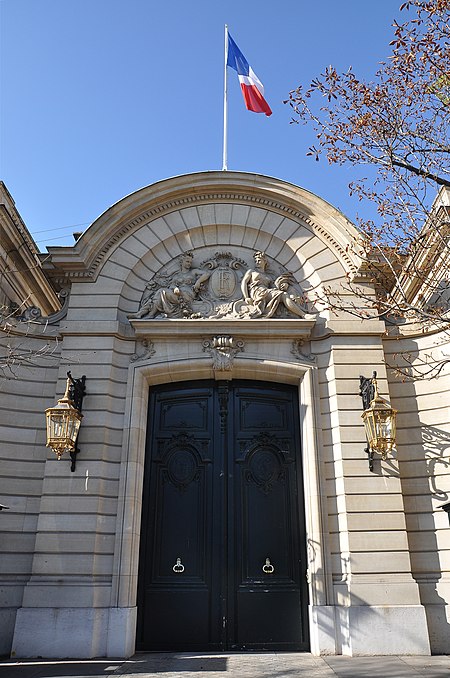Hôtel de Marigny

The Hôtel de Marigny is a town house in Paris, France, on the Avenue Marigny, not far from the Elysée Palace. It is used as a state guest house for state visitors to France. The house has been the property of the French government since 1972. Its history dates back to June 15, 1869, when Baron Gustave de Rothschild paid the Duchesse de Bauffremont 2,700,000 francs for two town houses, at 21 Avenue Marigny and 14 Rue du Cirque, with a total floorspace of approximately 40,000 square feet (3,700 m2). In 1872, the Baron decided to combine the two buildings into a single property and to erect additional buildings on part of the site. On May 17, 1879, he acquired the town house at 13 Avenue Marigny. Extensive work was carried out on the site from 1873 onwards, lasting for nearly 10 years, under the direction of the Baron's architect, Alfred-Philibert Aldrophe. Today, the Hôtel Marigny comprises a main building with one two-story wing at right angles, standing above a vast basement area for the domestic services. The main emphasis is on the monumental central part of the façade: the entrance to the main lobby comprises two lower-level reception areas beneath the raised ground-floor, while the upper portion contains four Corinthian columns framing a bay window and two niches, bearing a frame and sculpted frontispiece of the same provenance.
Excerpt from the Wikipedia article Hôtel de Marigny (License: CC BY-SA 3.0, Authors, Images).Hôtel de Marigny
Rue du Cirque, Paris 8th Arrondissement of Paris (Paris)
Geographical coordinates (GPS) Address Nearby Places Show on map
Geographical coordinates (GPS)
| Latitude | Longitude |
|---|---|
| N 48.870529 ° | E 2.315202 ° |
Address
Rue du Cirque 16
75008 Paris, 8th Arrondissement of Paris (Paris)
Ile-de-France, France
Open on Google Maps







